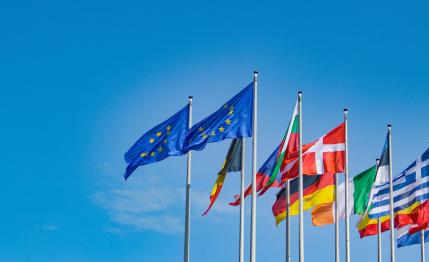
While the international climate community has gathered in Bonn for the UN Climate Talks (COP23), European leaders worked late into the night to agree on crucial reforms for the European Union Emissions Trading System (EU ETS) for the next phase (2021-2030). Covering almost half of the EU’s emissions, the EU ETS has been the central pillar of EU climate policy since 2005 and plays a major role in reaching its 2030 target. “The reform of the EU ETS sends a strong signal that Europe is committed to fulfilling our obligations under the Paris Agreement. Through the agreement efforts will be intensified to slash emissions and provide funds to trigger investments for innovative technologies in the low-carbon sector”, states International Carbon Action Partnership (ICAP) Co-Chair Mr Marc Allessie, Director of the Dutch Emissions Authority (NEa).
To ensure the system remains fit for purpose for the next decade, the European Union will implement a number of changes to the system, most notably: steeper emissions cuts, changes to the Market Stability Reserve (MSR), more targeted industry assistance as well as funds to help the industry and the power sectors meet the innovation and investment challenges of the transition to a low-carbon economy (European Commission, 2017).
The MSR, which will start operating in 2019, is designed to reduce the current surplus of allowances in the European carbon market. By adjusting the supply of allowances, the MSR also makes the system more resilient to future shocks. European leaders agreed that for the first five years of operation (2019-2024), the MSR would automatically remove 24% of all allowances in circulation if the total number of allowances available on the market rises above 833 million permits. If this number drops below 400 million, 100 million allowances are injected into the market annually to stabilize the price. Today’s decision by European leader doubles the original intake rate proposed by the European Commission (12%) and will ensure the market will return to scarcity quicker than previously anticipated. In addition, from 2023, permits in the MSR will be cancelled if the total amount of permits in the reserve exceeds the amount sold at auctions in the previous year, putting in place an overall “cap” on the number of allowances that can be stored in the MSR.
Steeper emissions cuts are also in store over the next decade. The Reduction Factor (LRF), which determines the rate at which the allowance cap declines over time, will be increased from 1.74% to 2.2% from 2021 onwards. This will ensure the EU ETS delivers a reduction of GHG emissions of 40% by 2030 compared to 1990 levels. As in the current phase, 57% of the allowances will be auctioned, with the remainder allocated to industry free of charge. However, new rules will be put in place to address the risk of carbon leakage, including a revision of the system of free allocation to focus on sectors at highest risk of shifting their production outside the EU. The new rules will also better account for technological developments in the regulated sectors. Finally, the reforms endorse several support mechanisms to help the industry and the power sectors meet the innovation and investment challenges of the transition to a low-carbon economy.
“These reforms consolidate lessons learned from a decade of emissions trading, as well as the experiences of the other 17 systems in operation worldwide and put Europe on a solid foundation to reach its 2030 targets”, says Constanze Haug, head of the ICAP Secretariat. As a founding member of ICAP, the European Commission, together with key Member States, cooperates with other jurisdictions worldwide to share best practices and discuss the latest issues in emissions trading. The Partnership, which counts 35 members and observers across four continents, marked its tenth anniversary with a symposium on the future of emissions trading last September. This culminated in a high-level joint statement in which 26 national and subnational governments, including EU Member States, Mexico, the Republic of Korea, California and Tokyo, pledged to strengthen action on climate change through renewed cooperation on carbon markets.

